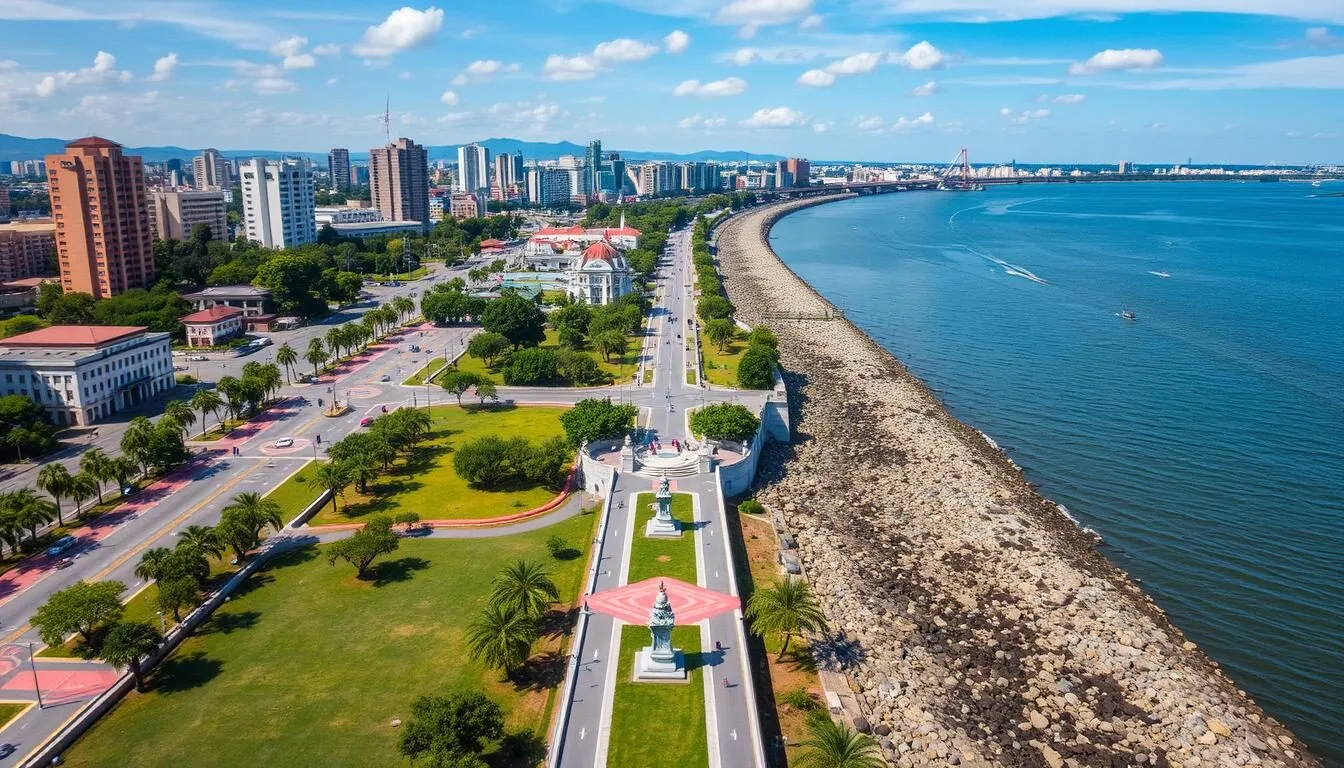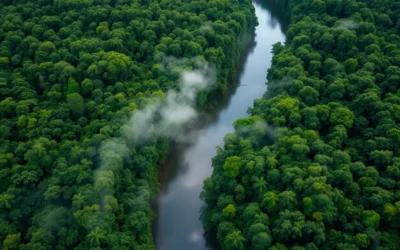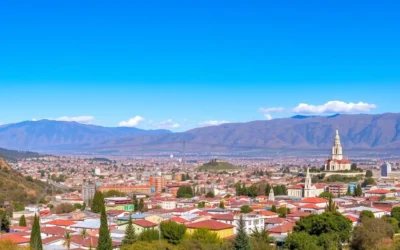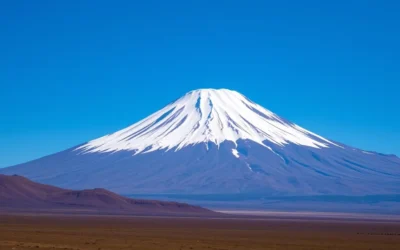Did you know that Guayaquil’s Malecón 2000 is the first public urban renewal project in Latin America to earn ISO 14001 certification for sustainability? This 2.5-kilometer riverfront promenade transformed what was once a dilapidated area into one of South America’s most successful urban revitalization projects, becoming the heart of Guayaquil’s tourism renaissance.
As Ecuador’s largest city and main port, Guayaquil serves as the gateway to the Galapagos Islands. Yet many travelers rush through without discovering the vibrant culture, colorful neighborhoods, and unique attractions that make this tropical city worth exploring. Whether you’re planning a quick stopover or a longer stay, this guide reveals all the best things to do in Guayaquil, Ecuador, along with essential travel tips to make your visit memorable.
Getting There & Planning Your Journey
Guayaquil is served by José Joaquín de Olmedo International Airport, Ecuador’s second-busiest airport with direct flights from major cities in the Americas. As the main gateway to the Galapagos Islands, many international travelers pass through Guayaquil, making it an ideal stopover destination.
Plan Your Guayaquil Adventure
Ready to explore Ecuador’s largest city? Start by booking your essentials:
Find Flights
Book Accommodations
Rent a Car
Browse Tours & Activities
Cruise Options
Getting to Guayaquil
By Air: International flights arrive at José Joaquín de Olmedo International Airport from cities like Miami, New York, Madrid, and Amsterdam. The airport is just 5 km (3.1 miles) from downtown, making transfers convenient.
By Bus: If you’re traveling within Ecuador, buses connect Guayaquil to major cities like Quito (8-9 hours), Cuenca (4 hours), and Montañita (3 hours). The main bus terminal, Terminal Terrestre, is well-organized with frequent departures.
By Cruise: Guayaquil serves as a port city, with some cruise lines stopping here. Most cruise ships dock at Puerto Marítimo, about 15 km (9.3 miles) south of downtown.
From the Galapagos: Many travelers visit Guayaquil as part of their Galapagos journey. Daily flights connect the islands to Guayaquil in about 1.5-2 hours, making it an ideal pre or post-Galapagos stop.
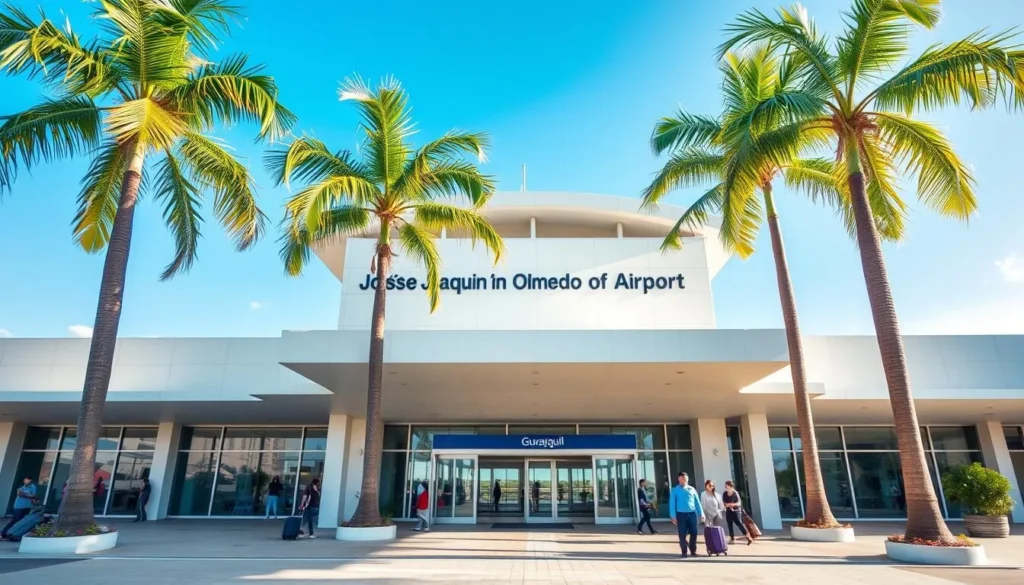
Best Time to Visit & Weather Tips
Guayaquil has a tropical savanna climate with distinct wet and dry seasons. Understanding the weather patterns will help you plan the ideal time for your visit.
Dry Season (June to November)
The best time to visit Guayaquil is during the dry season from June to November. During these months, temperatures average 23-31°C (73-88°F) with lower humidity and minimal rainfall. This period offers the most comfortable conditions for exploring the city’s outdoor attractions like Malecón 2000 and Cerro Santa Ana.
Wet Season (December to May)
From December to May, Guayaquil experiences its rainy season, with January through March being the wettest months. Temperatures range from 25-33°C (77-91°F) with high humidity. Brief but intense afternoon showers are common, though mornings are typically clear. If visiting during this period, plan indoor activities for afternoons and carry a lightweight rain jacket.
Packing Tip: Regardless of when you visit, pack lightweight, breathable clothing, sun protection (hat, sunglasses, sunscreen), and insect repellent. During the rainy season, a compact umbrella or rain jacket is essential. The sun can be intense year-round, so SPF 50+ sunscreen is recommended.
Getting Around Locally
Navigating Guayaquil is relatively straightforward with several transportation options available. Here’s how to get around the city efficiently and safely:
By Uber
Uber operates in Guayaquil and is often the safest and most convenient option for tourists, especially those who don’t speak Spanish. The app eliminates language barriers and provides upfront pricing. A typical ride within the tourist areas costs $2-5.
By Taxi
Yellow taxis are abundant but aren’t metered, so negotiate the fare before getting in. Ask your hotel to call a reputable taxi service or help you estimate fair prices. For safety, only use official yellow taxis with orange license plates.
By Bus
Metrovía is Guayaquil’s modern bus system with dedicated lanes. At $0.30 per ride, it’s the most economical option. Three trunk routes cover most tourist areas, but buses can get crowded during peak hours. For safety, avoid carrying valuables when using public transportation.
Guided Tours
For those concerned about safety or wanting deeper insights into the city, guided tours offer a convenient alternative. A half-day city tour typically covers the main attractions and provides historical context. Many hotels can arrange private guides and transportation for around $40-60 per person.
Where to Stay
Choosing the right neighborhood in Guayaquil is crucial for both convenience and safety. Here are the best areas to stay and accommodation options for different budgets:
Best Neighborhoods for Tourists
Near Malecón 2000
The area around Malecón 2000 is ideal for first-time visitors, offering easy access to major attractions and generally good security. Hotels here range from budget to luxury, with many international chains present.
Las Peñas/Cerro Santa Ana
This colorful historic neighborhood at the foot of Santa Ana Hill offers charming boutique hotels and guesthouses. It’s picturesque and within walking distance of the Malecón, though accommodations tend to be more limited.
Downtown/City Center
Staying in the downtown area puts you close to Parque Seminario (Iguana Park), the Metropolitan Cathedral, and shopping districts. This area offers a mix of business hotels and budget options.
Recommended Hotels
Luxury
- Hotel del Parque – Boutique hotel in a restored 19th-century building
- Wyndham Guayaquil – Modern hotel with river views and excellent security
- Hilton Colon Guayaquil – Full-service hotel with multiple restaurants
Mid-Range
- Hotel Palace Guayaquil – Centrally located with modern rooms
- Hotel Continental – Classic hotel near Malecón 2000
- Unipark Hotel – Contemporary option in the downtown area
Budget
- Manso Boutique Guesthouse – Affordable option in Las Peñas
- Hotel Del Centro – Basic but clean accommodations downtown
- Dreamkapture Hostel – Social hostel with private and dorm options
Find Your Perfect Stay in Guayaquil
Browse accommodations in the safest areas with the best access to attractions:
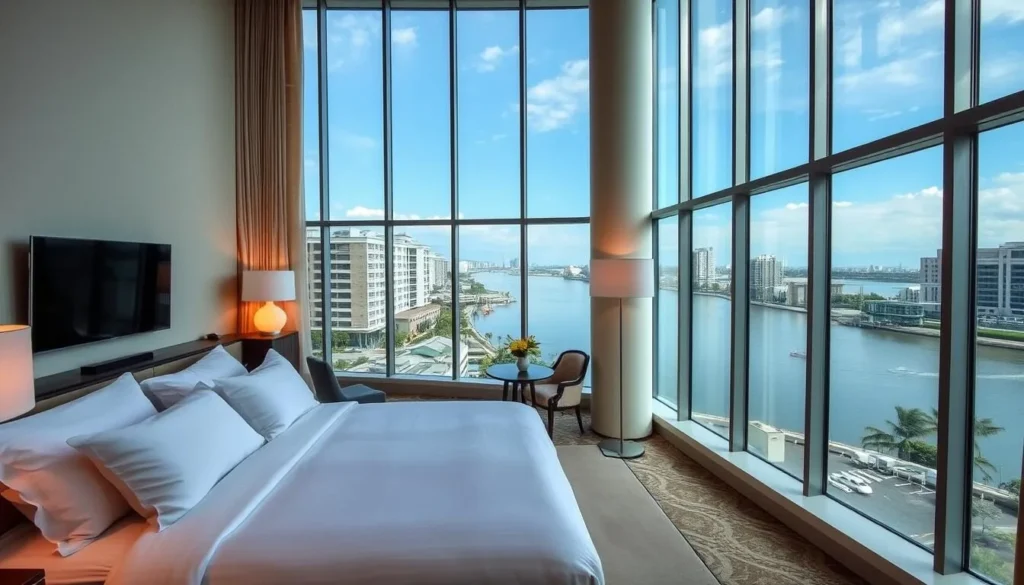
Dining & Local Cuisine
Guayaquil’s coastal location makes it a seafood lover’s paradise, but the city’s cuisine extends far beyond ocean delicacies. Here’s what to eat and where to find the best local dishes:
Must-Try Local Dishes
Cangrejo Criollo
Guayaquil’s signature dish features red mangrove crabs boiled in beer and spices. The messy but delicious experience involves cracking open crab shells to reach the tender meat inside. Best enjoyed at specialized crab restaurants like Red Crab or La Pata Gorda.
Encebollado
This hearty fish soup combines fresh tuna, yuca, tomatoes, and pickled onions, typically served with plantain chips and lime. It’s a popular breakfast dish, especially after a night out. Try it at Encebollados Don Baby or from street vendors along Malecón 2000.
Bolón de Verde
These fried green plantain balls stuffed with cheese, chicharrón (pork cracklings), or both make for a filling breakfast or snack. Café de Tere serves some of the city’s best bolones in various flavors.
Where to Eat
Fine Dining
- Casa Julián – Elegant restaurant in Parque Histórico serving refined Ecuadorian cuisine
- Lo Nuestro – Traditional Ecuadorian dishes in a colonial-style mansion
- La Perlita – Upscale seafood restaurant with river views
Casual Dining & Street Food
- Mercado del Río – Food hall on Malecón 2000 with multiple local options
- La Canoa – Authentic coastal cuisine at reasonable prices
- Las Peñas area – Small cafes and restaurants with local flavors

Dining Tip: Many restaurants in Guayaquil add a 10% service charge to the bill. Additional tipping is appreciated but not expected. For safety, stick to bottled water and avoid raw vegetables unless you’re at upscale establishments with proper food handling practices.
Experience Guayaquil’s Culinary Scene
Discover the best of Ecuadorian cuisine with a guided food tour:
Top Attractions & Sightseeing
Guayaquil offers a diverse range of attractions, from historic neighborhoods to modern riverfront developments. Here are the must-see sights that should be on every visitor’s itinerary:
1. Malecón 2000
This 2.5-kilometer riverfront promenade is the heart of Guayaquil’s tourism scene and a testament to the city’s urban renewal. Strolling along Malecón 2000 offers views of the Guayas River while passing gardens, monuments, museums, restaurants, and shopping areas. Don’t miss the Moorish Clock Tower, the Hemiciclo de la Rotonda monument, and the various plazas along the way.
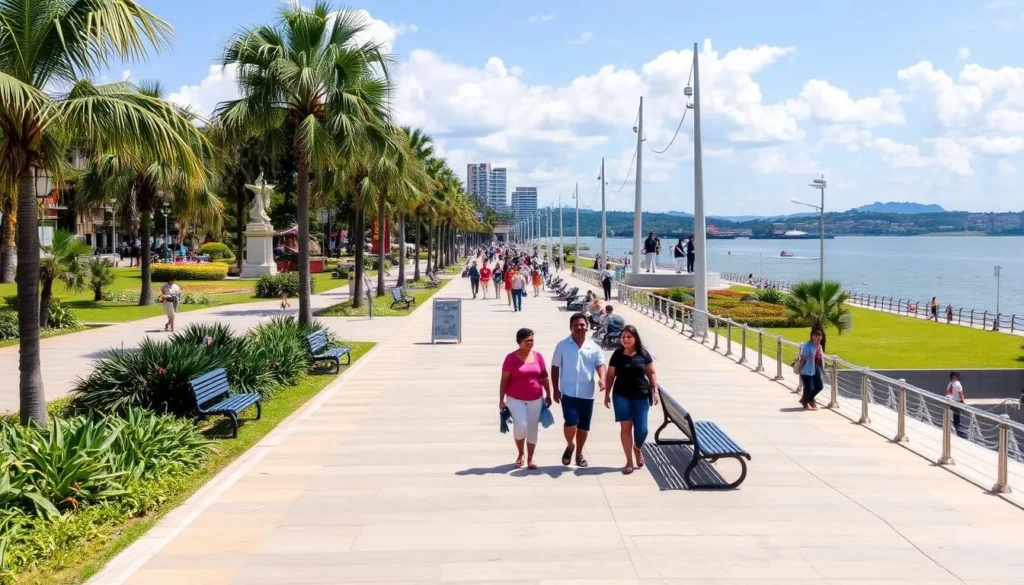
Explore Guayaquil’s Highlights
See the best of the city with a guided tour covering Malecón 2000 and other top attractions:
2. Las Peñas & Cerro Santa Ana
Las Peñas is Guayaquil’s oldest neighborhood, featuring colorful wooden houses along cobblestone streets. From here, climb the 444 numbered steps of Cerro Santa Ana to reach a lighthouse and chapel at the summit, enjoying panoramic city views along the way. The stairway is lined with cafes, art galleries, and boutiques, making the ascent as enjoyable as the destination.
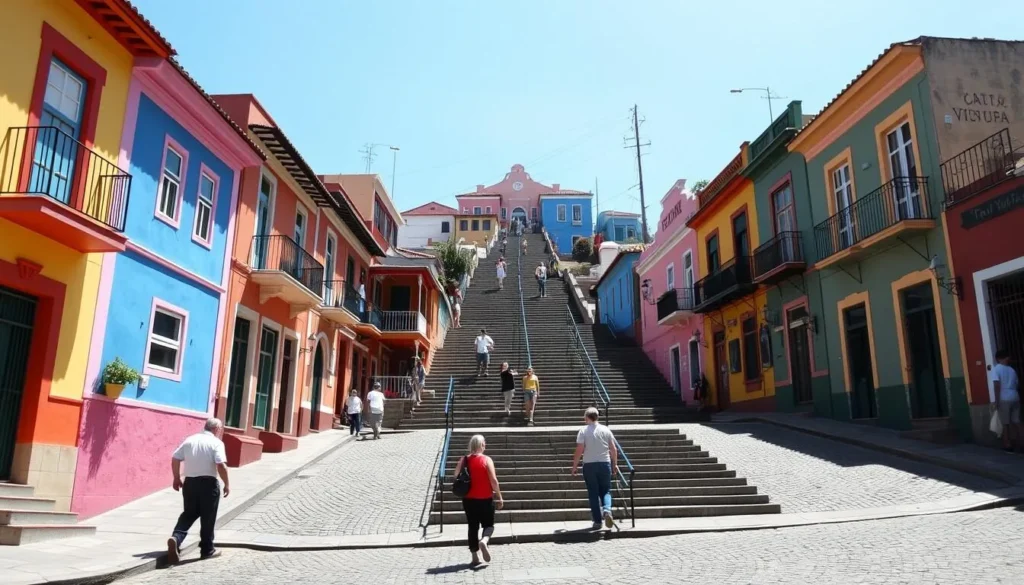
3. Parque Seminario (Iguana Park)
Located in the heart of downtown, this quirky park is home to dozens of land iguanas that roam freely among visitors. The reptiles are surprisingly tame and make for great photo opportunities. The park also features a statue of Simón Bolívar and sits across from the Metropolitan Cathedral, making it an easy stop while exploring downtown.
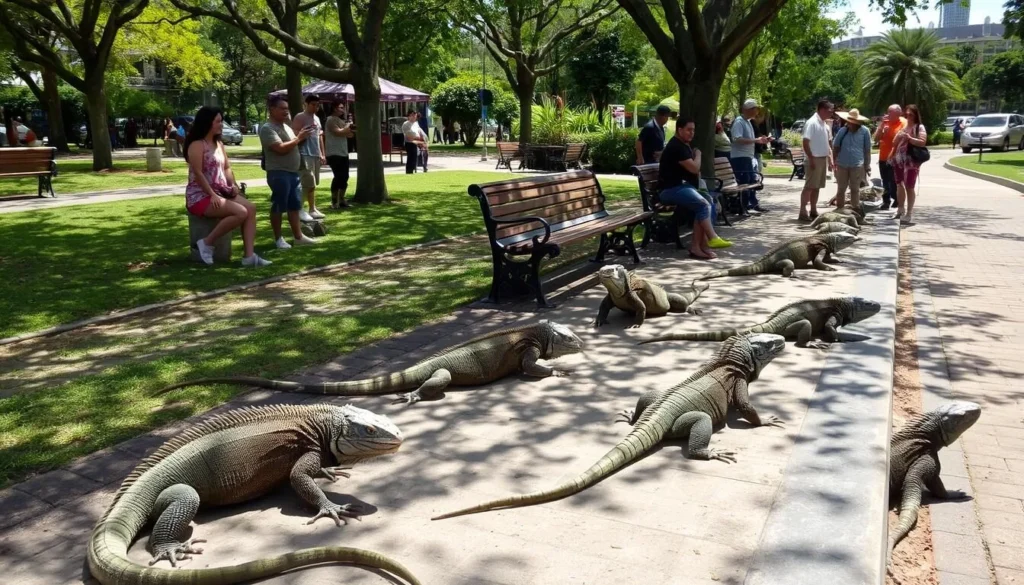
4. Parque Histórico Guayaquil
Located about 15 minutes from downtown, this historical park offers a glimpse into Ecuador’s past through three distinct zones. The Wildlife Zone showcases native animals, the Urban Architecture Zone preserves historic buildings, and the Traditions Zone demonstrates rural life and agriculture. It’s an excellent family-friendly attraction that combines education with entertainment.
Visit Parque Histórico Guayaquil
Experience Ecuador’s history, culture, and wildlife in one fascinating location:
5. La Perla Ferris Wheel
Standing 57 meters (187 feet) tall, La Perla offers spectacular views of the city and river from air-conditioned cabins. Located at the northern end of Malecón 2000, this giant ferris wheel completes a full rotation in about 12 minutes, providing plenty of time to take photos and enjoy the panorama.
More Things to Do in Guayaquil
6. Isla Santay
This ecological reserve is accessible via a pedestrian bridge from the mainland. Rent a bicycle to explore the island’s boardwalks through mangrove forests, spot wildlife including birds and crocodiles, and visit the small eco-village where local families live. The island offers a refreshing natural escape just minutes from the city center.
7. Museum of Anthropology and Contemporary Art (MAAC)
Located on Malecón 2000, this free museum houses an impressive collection of pre-Columbian artifacts and contemporary Ecuadorian art. The modern building itself is architecturally significant, and the air-conditioning provides a welcome respite from Guayaquil’s heat.
8. Guayas River Cruise
See Guayaquil from a different perspective on a river cruise along the Guayas. Several operators offer tours ranging from 40 minutes to 2 hours, with some including visits to nearby attractions like Isla Santay. Evening cruises are particularly atmospheric as the city lights begin to twinkle.
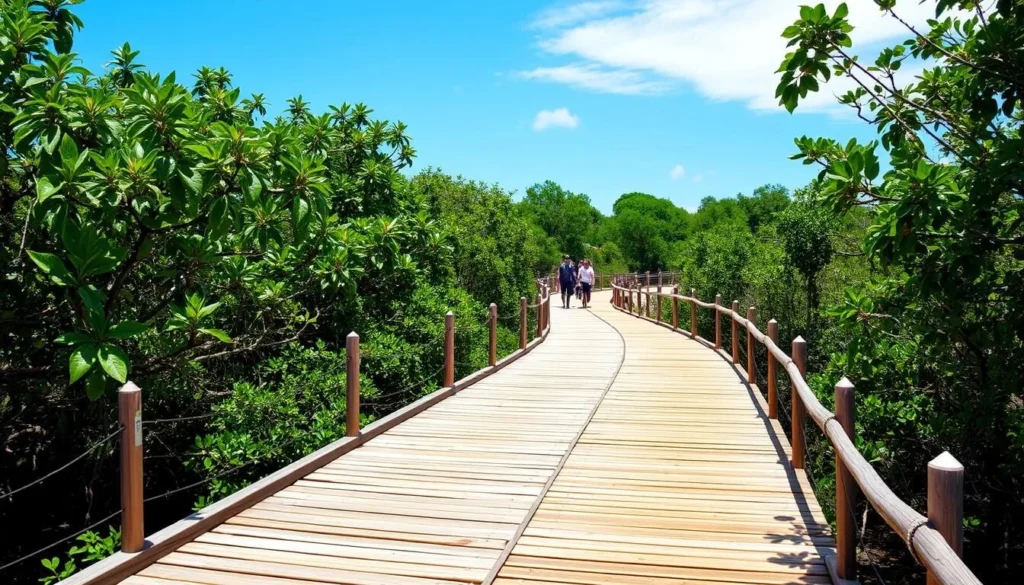
9. Malecón del Salado
This lesser-known boardwalk along the Salado Estuary offers a more local experience than Malecón 2000. Visit in the evening to see the impressive Dancing Waters fountain show, rent a rowboat, or enjoy seafood at the waterfront restaurants.
10. Downtown Guayaquil
Explore the city center beyond Iguana Park to discover architectural gems like the Municipal Palace, Metropolitan Cathedral, and Iglesia San Francisco. Avenida 9 de Octubre is the main commercial corridor, lined with shops, restaurants, and historic buildings.
11. Day Trips from Guayaquil
Use Guayaquil as a base to explore nearby attractions like Cerro Blanco Protected Forest (for hiking and birdwatching), Puerto El Morro (for dolphin watching), or the beaches of Salinas (about 2 hours away). These excursions offer a taste of Ecuador’s diverse landscapes within easy reach of the city.
Discover More Guayaquil Experiences
From river cruises to day trips, find the perfect activities for your visit:
Museums, Cultural Spots & Festivals
Guayaquil offers rich cultural experiences that provide insight into Ecuador’s history, art, and traditions. Here are the top cultural attractions and events to enhance your visit:
Museums & Cultural Centers
Museo Municipal de Guayaquil
This municipal museum houses archaeological pieces, colonial art, and exhibits on the city’s history. Located near the Metropolitan Cathedral, it provides context for understanding Guayaquil’s development from pre-Columbian times to the present.
Museo Nahim Isaías
Housed in a historic building, this museum showcases an impressive collection of religious art from the colonial period, including paintings, sculptures, and decorative arts from the 16th to 19th centuries.
Presley Norton Museum
Located in a restored house in Urdesa, this museum displays archaeological pieces from Ecuador’s coastal cultures, with a focus on the Valdivia, Machalilla, and Chorrera periods.
Centro Cultural Libertador Simón Bolívar
This modern cultural center hosts temporary exhibitions, concerts, and cultural events throughout the year. Check their schedule for performances during your visit.
Annual Festivals & Events
Independence Day (October 9)
Guayaquil celebrates its independence from Spain with parades, concerts, and fireworks. The festivities typically last for several days, with the main celebration on October 9th featuring military parades and cultural performances.
Foundation Day (July 25)
The city commemorates its founding with the Fiestas Julianas throughout July, culminating on the 25th. Events include art exhibitions, concerts, traditional dance performances, and the election of the Queen of Guayaquil.
Festival of Lights (December)
During the Christmas season, Malecón 2000 and other parts of the city are decorated with elaborate light displays. The event includes musical performances, food stalls, and family-friendly activities.

Nature & Outdoor Experiences
Despite being Ecuador’s largest city, Guayaquil offers surprising opportunities to connect with nature. From urban parks to nearby ecological reserves, here are the best outdoor experiences in and around the city:
Cerro Blanco Protected Forest
Located about 15 km (9.3 miles) west of the city, this 6,000-hectare dry tropical forest is home to over 200 bird species, including the endangered Great Green Macaw. Four hiking trails of varying difficulty allow visitors to explore the forest’s biodiversity. The reserve is accessible by public bus or taxi, with guided tours available for around $4 per person.
Jardín Botánico de Guayaquil
This botanical garden showcases Ecuador’s diverse flora with sections dedicated to orchids, medicinal plants, and tropical species. Walking paths wind through the 5-hectare property, offering a peaceful retreat from the city’s hustle. Located in the north of Guayaquil, it’s easily reached by taxi or as part of a city tour.
Puerto El Morro
About 90 minutes from Guayaquil, this coastal area is known for its resident bottlenose dolphins. Boat tours take visitors through mangrove channels to spot dolphins, frigatebirds, and other wildlife. The small fishing village also offers fresh seafood restaurants for a post-tour meal.

Experience Ecuador’s Natural Wonders
Book guided nature tours to see the best of Guayaquil’s surrounding ecosystems:
Safety, Etiquette & Local Customs
Understanding local safety considerations and customs will help you navigate Guayaquil with confidence. Here’s what you need to know:
Safety Tips
General Safety
- Stick to tourist areas, particularly Malecón 2000, Las Peñas, and downtown during daylight hours
- Use Uber or registered taxis rather than hailing one on the street
- Keep valuables secure and avoid displaying expensive jewelry or electronics
- Carry only necessary cash and keep a photocopy of your passport (leave the original in your hotel safe)
Areas to Exercise Caution
- Avoid southern areas beyond Portete de Tarquí Avenue
- Be vigilant in crowded areas like bus terminals and markets
- Exercise extra caution after dark, even in tourist areas
- Consider guided tours for exploring beyond the main tourist zones
Important: While Guayaquil has made significant improvements in safety, it still experiences higher crime rates than other Ecuadorian cities. Most visits are trouble-free, but staying aware of your surroundings and following basic precautions will significantly reduce risks.
Local Customs & Etiquette
Greetings
Ecuadorians typically greet with a handshake, though friends may exchange a kiss on the cheek. Using basic Spanish phrases like “Buenos días” (good morning) and “Gracias” (thank you) is appreciated and shows respect for the local culture.
Dining
Tipping around 10% is customary in restaurants if a service charge isn’t included. Meals are social occasions, so don’t rush. If invited to someone’s home, bringing a small gift like chocolates or flowers is appropriate.
Photography
Always ask permission before photographing individuals, especially indigenous people. Some may request a small payment. Avoid photographing military installations, government buildings, or airports, which can lead to questioning by authorities.
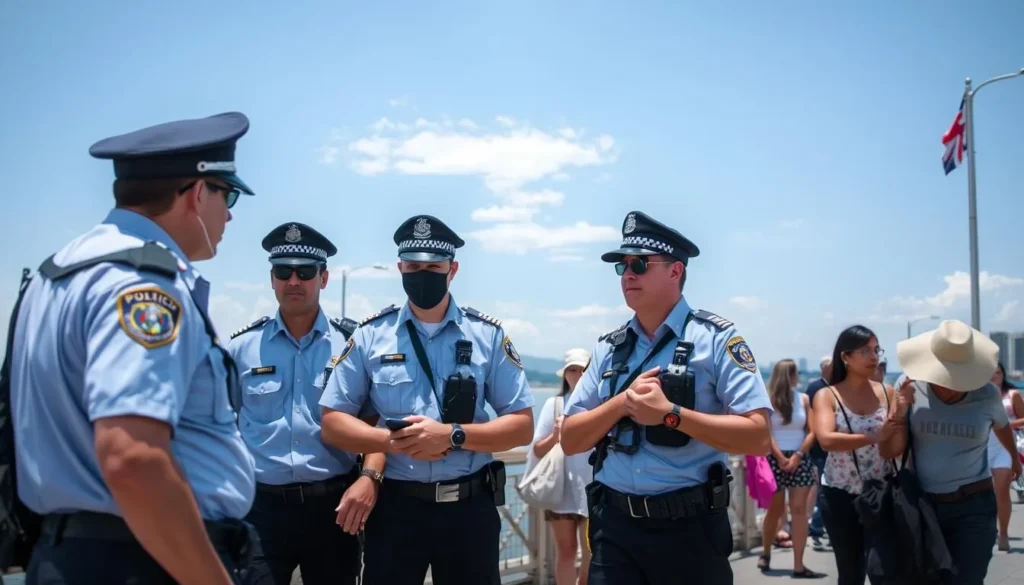
Practical Travel Tips
Money Matters
- Ecuador uses the US dollar as its official currency
- Carry small bills ($1, $5, $10) as many places won’t accept $50 or $100 notes
- ATMs are widely available in shopping centers and banks
- Credit cards are accepted at most hotels and restaurants, but cash is preferred for small purchases
- Be aware of counterfeit bills, especially when receiving change
Health & Hygiene
- Drink only bottled water and avoid ice in drinks
- Use sunscreen (SPF 50+) and stay hydrated in Guayaquil’s tropical climate
- Carry hand sanitizer and toilet paper, as public restrooms may lack supplies
- Consider travel insurance that covers medical emergencies
- Pharmacies are well-stocked and can provide basic medications
Communication
- The country code for Ecuador is +593
- SIM cards are available at the airport and shopping centers
- Free Wi-Fi is offered at most hotels, cafes, and restaurants
- Download offline maps and translation apps before your trip
- Learn basic Spanish phrases to enhance your experience
“Guayaquil may not have the immediate charm of Quito or Cuenca, but those who take the time to explore will discover a vibrant city with unique attractions, delicious cuisine, and the warmth of coastal Ecuadorian culture.”
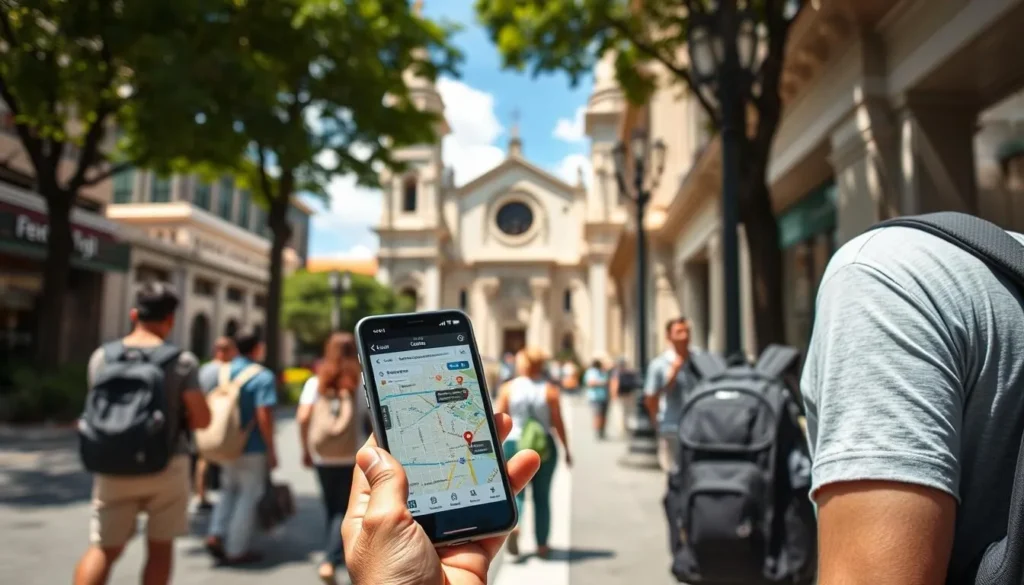
Conclusion: Is Guayaquil Worth Visiting?
While Guayaquil is often overlooked in favor of Ecuador’s more famous destinations, the city offers a unique blend of urban renewal, historical charm, and tropical atmosphere that rewards curious travelers. Whether you’re spending a day in transit to the Galapagos or dedicating several days to explore, Guayaquil provides authentic experiences that showcase a different side of Ecuador.
From the vibrant colors of Las Peñas to the surprising wildlife encounters at Iguana Park, from the delicious seafood to the warm hospitality of locals, Guayaquil has evolved into a destination worthy of your time. By following the safety recommendations and focusing on the city’s highlights, you’ll discover that Ecuador’s largest city has far more to offer than its reputation might suggest.
Ready to explore the Pearl of the Pacific? Start planning your Guayaquil adventure today and discover why this evolving city deserves a spot on your Ecuador itinerary.
Plan Your Guayaquil Adventure
From flights to tours, get everything you need for an unforgettable Ecuador experience:
The above is subject to change.
Check back often to TRAVEL.COM for the latest travel tips and deals.
